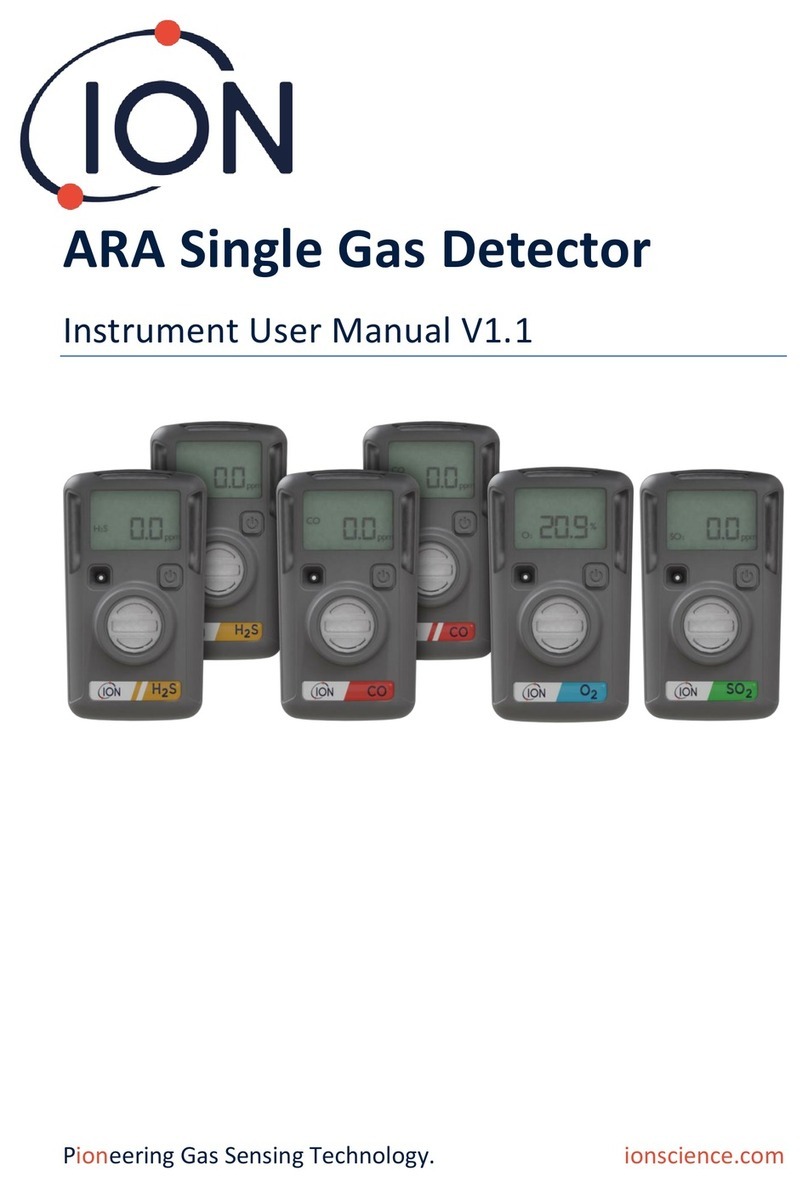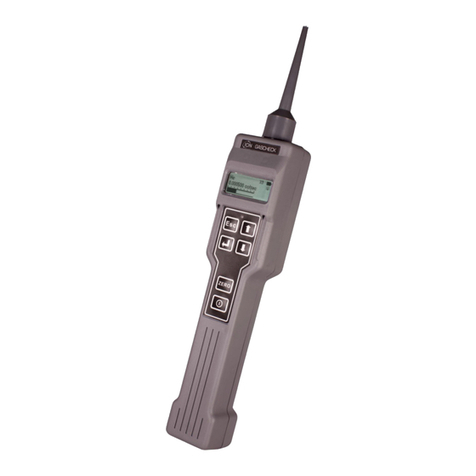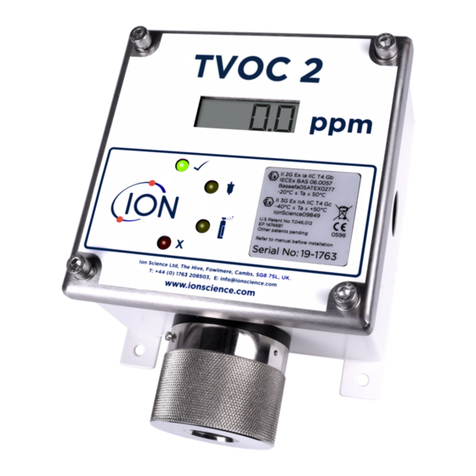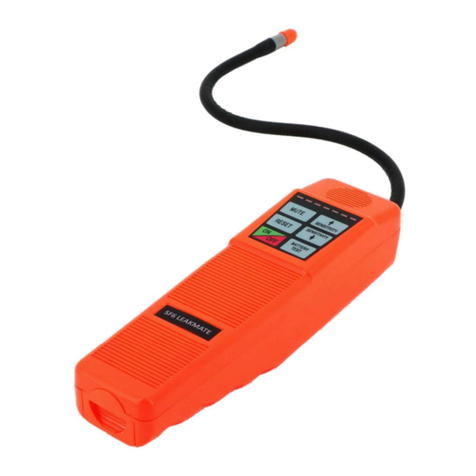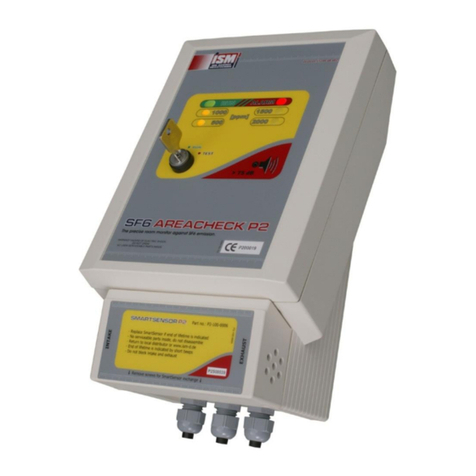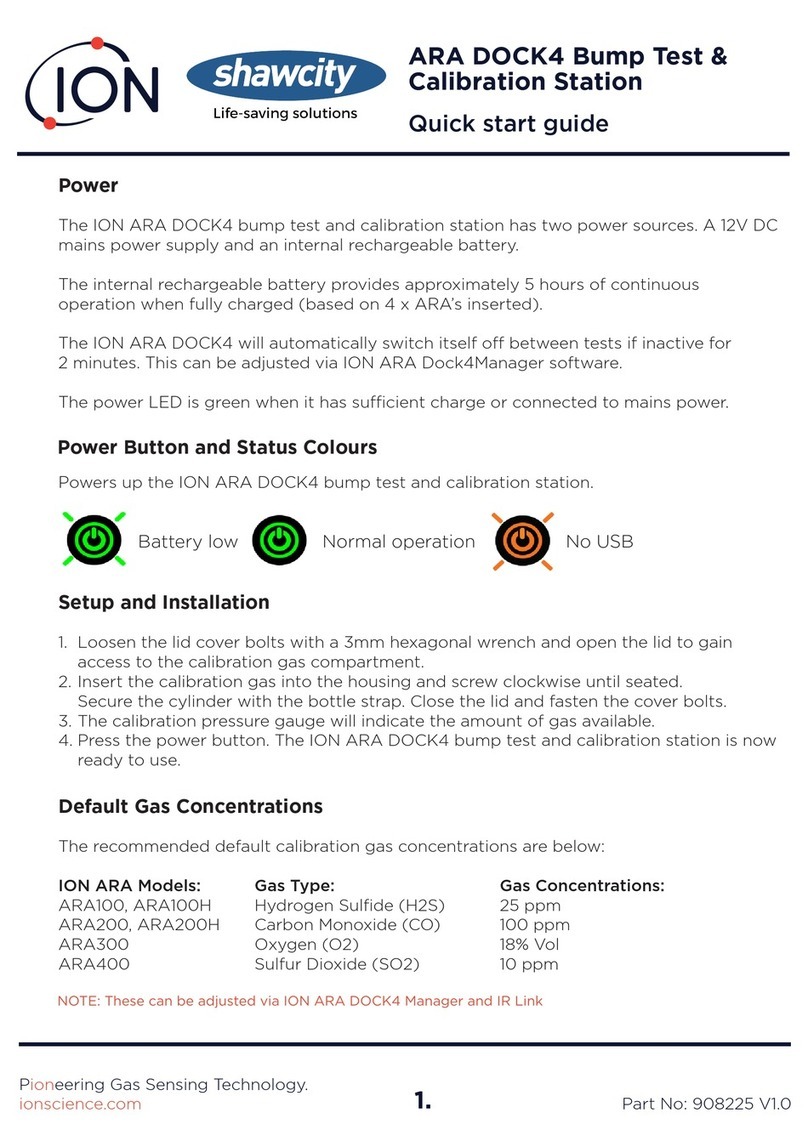GasCheck G Instrument User Manual V2.4R
Unrivaled Gas Detection. Page 4 of 26 ionscience.com/usa
Contents
EU Declaration of conformity .................................................................................................................................................. 3
Statements............................................................................................................................................................................. 5
Safety.....................................................................................................................................................................................................5
Quality Assurance..................................................................................................................................................................................5
Responsibility of use..............................................................................................................................................................................5
Disposal .................................................................................................................................................................................................5
Calibration Facility.................................................................................................................................................................................5
Legal Notice ...........................................................................................................................................................................................5
Instrument description............................................................................................................................................................ 6
Packing list ............................................................................................................................................................................. 7
How GasCheck G works........................................................................................................................................................... 8
Thermal Conductivity ............................................................................................................................................................................8
Replacing batteries ................................................................................................................................................................. 9
Getting started ..................................................................................................................................................................... 10
The Keypad..........................................................................................................................................................................................10
Instrument main menu ......................................................................................................................................................... 11
Running screen ..................................................................................................................................................................... 12
Gas selection .......................................................................................................................................................................................12
Sensitivity ............................................................................................................................................................................................12
Battery status ......................................................................................................................................................................................12
Backlight ..............................................................................................................................................................................................12
Gas measurement ...............................................................................................................................................................................12
Sound indication..................................................................................................................................................................................12
Bar graph .............................................................................................................................................................................................12
Peak hold.............................................................................................................................................................................................12
Functions ............................................................................................................................................................................. 13
Contrast...............................................................................................................................................................................................13
Backlight ..............................................................................................................................................................................................13
Sound...................................................................................................................................................................................................13
Peak hold.............................................................................................................................................................................................13
Calibration ...........................................................................................................................................................................................13
Battery selection .................................................................................................................................................................................14
View Data ............................................................................................................................................................................................14
Units ....................................................................................................................................................................................................14
Display .................................................................................................................................................................................................14
Gas selection .......................................................................................................................................................................................15
Upgrade...............................................................................................................................................................................................15
Using GasCheck G ................................................................................................................................................................. 17
Probe options....................................................................................................................................................................... 18
Detecting leaks..................................................................................................................................................................... 19
Overview .............................................................................................................................................................................................19
Calibration ........................................................................................................................................................................... 20
Overview .............................................................................................................................................................................................20
Selecting Factory or Custom Calibration.............................................................................................................................................20
Calibration procedure using 'ppm' units.............................................................................................................................................20
Calibration procedure using 'cc/sec' units ..........................................................................................................................................21
Instrument specifications ...................................................................................................................................................... 22
40 Hours (20 hours when using the backlight) ........................................................................................................................ 22
Replacing parts..................................................................................................................................................................... 22
Instrument warranty and service........................................................................................................................................... 24
Warranty .............................................................................................................................................................................................24
Service .................................................................................................................................................................................................24
Contact details.....................................................................................................................................................................................25
Manual log ........................................................................................................................................................................... 26








